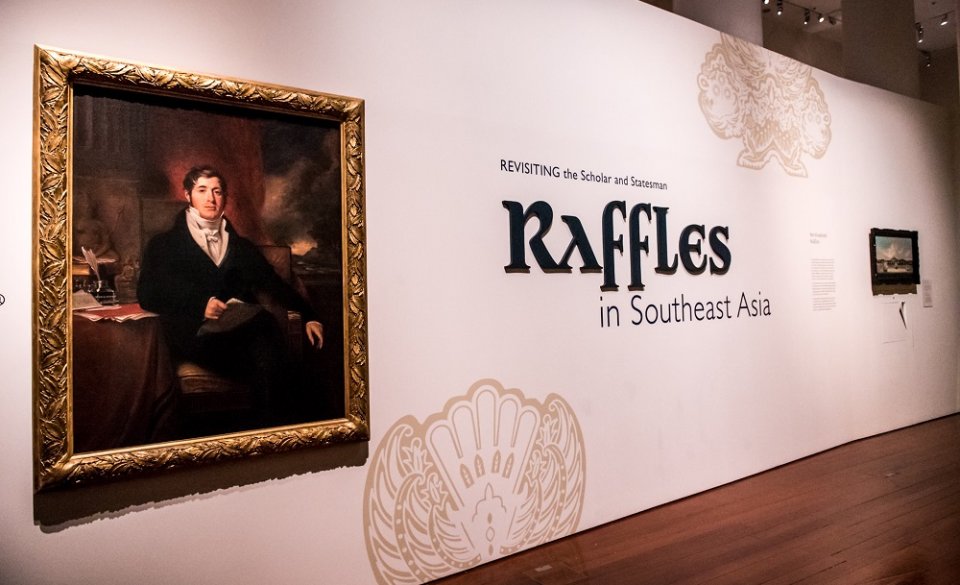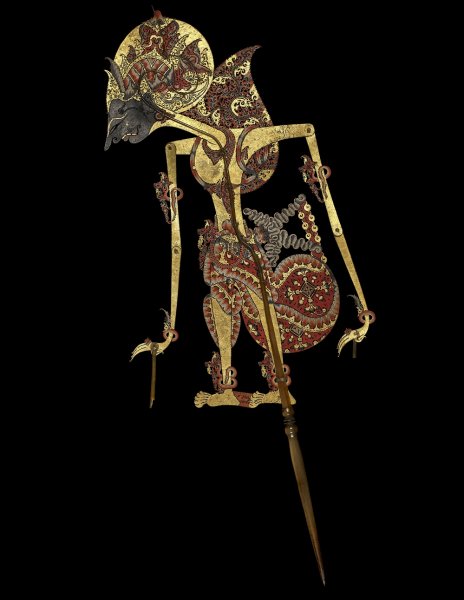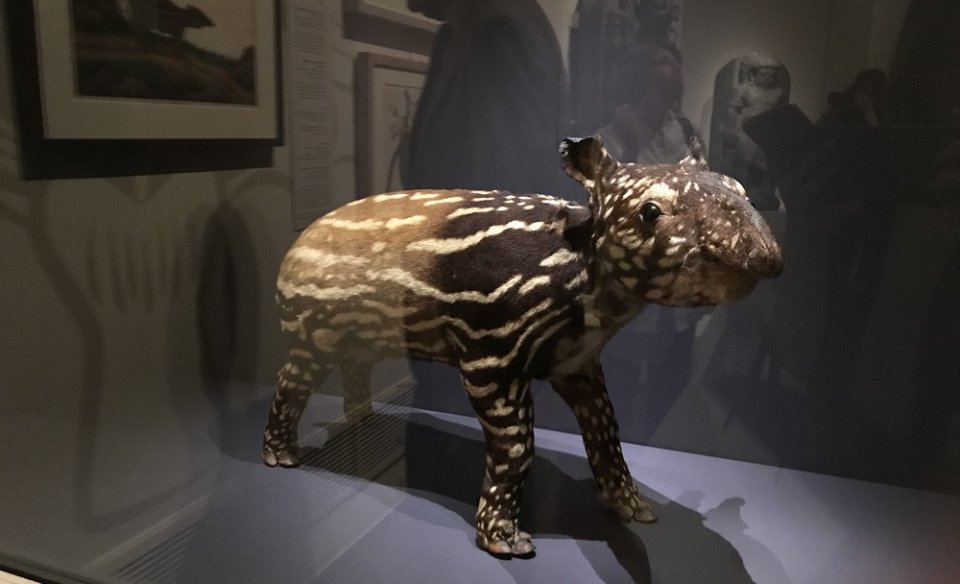Revisiting Raffles exhibition reveals what an ignoramus Raffles really was
Refreshing perspective during the Bicentennial
Amid all the moony art shows paying tribute to the Singapore Bicentennial, one exhibition isn’t afraid to take a different stand. The new Raffles in Southeast Asia: Revisiting the Scholar and Statesman, showing from Feb 1-Apr 28 at the Asian Civilisations Museum (ACM), focuses on Sir Stamford Raffles’ collecting habits and histories in Java, Indonesia—and readily exposes just how misinformed he was most of the time.
Curated in collaboration with the British Museum in London, the exhibition consists mostly of Javanese and Sumatran objects Raffles personally collected, employing him as a frame to explore the encounter between the British, Dutch, Javanese, and Malay peoples here in the Malay Archipelago. It grounds notions of the colonial ruler as a collector of natural history and culture from Southeast Asia, before subverting them with new possibilities—that he was exploitative, wrongfully pompous; even a plagiariser.

Photo credit: Asian Civilisations Museum
On the outset, it looks like another humdrum collection of dusty bits and bobs from the region. But take a closer look, and you’ll find that they amass to a portrayal of Raffles (and his European counterparts) that is certainly less than flattering.
Raffles in Southeast Asia opens with the iconic portrait of Raffles himself, often believed to have been painted in Singapore but actually done in Java. In it is a depiction of a sculpture—juxtaposed in the exhibit with the actual Javanese artefact, to illustrate the disparity between perception (a European-influenced take with Greco-Roman features) and reality. “We wanted to raise the question in visitors’ minds of how accurately did Raffles and Europeans understand and portray Southeast Asia, in particular Java,” confirmed Dr. Stephen Murphy, Senior Curator of Southeast Asia at ACM.
While putting together his own idea of Java, Raffles took a strong interest in national history as a symbol of civilisation. Thus, you’ll see a chunk of his personal Javanese shadow puppet collection on display; Raffles thought that puppet theatre was a part of national history—not realising that though the kingdoms referenced in the shows were real, the stories were myths.

Arjuna from the Mahabharata. Photo courtesy of The Trustees of the British Museum
Also on display are some outdated, rather contentious ideas. There isn’t a lot of Islamic material on hand—just two drawings—because Raffles did not consider Islam to be a marker of civilisation, said Keeper of Asia at the British Museum Jane Portal, who curated the British Museum portion of the exhibition. “In fact he considered it to be something that brought levels of civilisation down.”
“Again, apologies for these very unacceptable ideas,” she added.
Instead, Raffles chose to focus on Hinduism and Buddhism instead, collecting smaller figures and light sculptures from the religions to bring back to Britain. But because the religions weren’t well-understood by Europeans at the time, he boasted that he had an almost complete collection of Hindu images—when in actuality, 85% of that were Buddhist. “So again, he didn’t really have a very good understanding of what he was collecting,” Portal added.
The exhibition has also devoted space to highlight what Raffles didn’t collect, to offer a glimpse into his thought process and what he was interested in. On show are two monumental stone statues from a 13th Century temple in East Java—on loan from the Museum of World Cultures in the Netherlands—that are proven to have been on Raffles’ radar in his time, yet didn’t make the cut to his prized collection. One did make it into the book he authored, The History of Java, but is depicted as more European-looking than it actually is. He also omitted gold in his collections, despite gold being one of the high markers of Javanese artistic culture.

The guardian Mahakala as depicted in The History of Java, and in actuality.
And the list of fumbles goes on. In addressing his reputation as a great natural historian, Raffles in Southeast Asia questions how much Raffles was actually involved in many of the discoveries he’s credited with today. The infamous Rafflesia arnoldii flower, for one, was named after him and naturalist Joseph Arnold, even though it was discovered by an Indonesian guide working for Arnold in 1818. It recalls the centuries-old problem of natives bringing wildlife to their colonial masters, after which the Europeans publish and get credit.
Don’t miss the iconic stuffed tapir on display too—a symbol of the rivalry between Raffles and William Farquhar, the original frenemies. Historians have it that Farquhar first wrote to Raffles that he had discovered the cuddly mammal, and was going to submit an article to a journal to publish on it. Upon hearing this, Raffles contacted the editor and tried to pull the article, so that he could publish first and gain credit. Thankfully, he failed—but was probably knocked off Farquhar’s BFF list from then on.

When probed on the curatorial intent for the exhibition, Portal said, “I wasn’t trying to look at Raffles as being positive or negative; my question was what did he collect and why. So then you look at his ideas, and I think the reason why they sound negative now is because we don’t consider them to be acceptable anymore.”
“He really was collecting because he was trying to show the Javanese in a positive light, as a civilisation—to show that they were interested in history, they had stone architecture; they had a glorious past. That’s not the way we look at cultures nowadays, but it was the way Raffles was looking at things—a way that was appropriate in the early 19th century,” she added.
Of course, all of this is just one side to the founder we thought we knew, in the Singapore Bicentennial’s overall aim of looking at every aspect in the 700-year journey towards Singapore today. Kennie Ting, Director of ACM, said the museum is “very committed to doing exhibitions that are unprecedented, in terms of the kinds of new perspectives and knowledge we are able to contribute to Singapore and the world”. If that means ruffling a few feathers, we’ll take it.
Raffles in Southeast Asia: Revisiting the Scholar and Statesman runs from Feb 1-Apr 28 at the Asian Civilisations Museum. Admission is $12. More information available here.
Advertisement